Search for articles, topics or more
browse by topics

Search for articles, topics or more

Designers shape the world around us, creating objects that provide us with function, comfort, luxury, and even companionship in our day to lives. But what objects do these designers gravitate towards in their own homes, and what brings them joy away from the world of work? To find out the answer to this question, we caught up with Molteni&C designers Neri&Hu, Vincent Van Duysen, Yabu Pushelberg and Michael Anastassiades
For this year’s London Design Festival, the Brompton Design District has selected “Conviviality – The Art of Living Together” as its overarching theme. It is a topic that Molteni&C knows well. Throughout the 20th- and 21st- centuries, the company has collaborated with leading names from across design and architecture, creating timeless furniture and spaces that care deeply for people’s comfort and wellbeing.
There is more to conviviality than mere function, however. Some objects may speak to us in a way that moves beyond the purely functional, captivating us for reasons that can be difficult to pin down.
It is near impossible to predict what object may charm a person. Some of us are attracted to objects with intriguing material uses, others to those with fascinating backstories, while many are drawn to objects with sentimental value
In this spirit of conviviality, Molteni&C has decided to mark the 2023 London Design Festival by asking a selection of its designers which objects they couldn’t bear to be parted from.
A PAIR OF ARMCHAIRS BY ELIZABETH EYRE DE LANUX, C. 1929
SELECTED BY VINCENT VAN DUYSEN
How would you describe your companion object?
It’s a pair of c. 1929 armchairs by the American designer Eyre de Lanux. They’re very radical in the design, the proportions and their pureness, which was very avant-garde for that era. They’re made of mahogany and woven straw.
 A pair of armchairs by Elizabeth Eyre de Lanux selected by Vincent Van Duysen | Photograph courtesy of Kevin Faingnaert
A pair of armchairs by Elizabeth Eyre de Lanux selected by Vincent Van Duysen | Photograph courtesy of Kevin Faingnaert
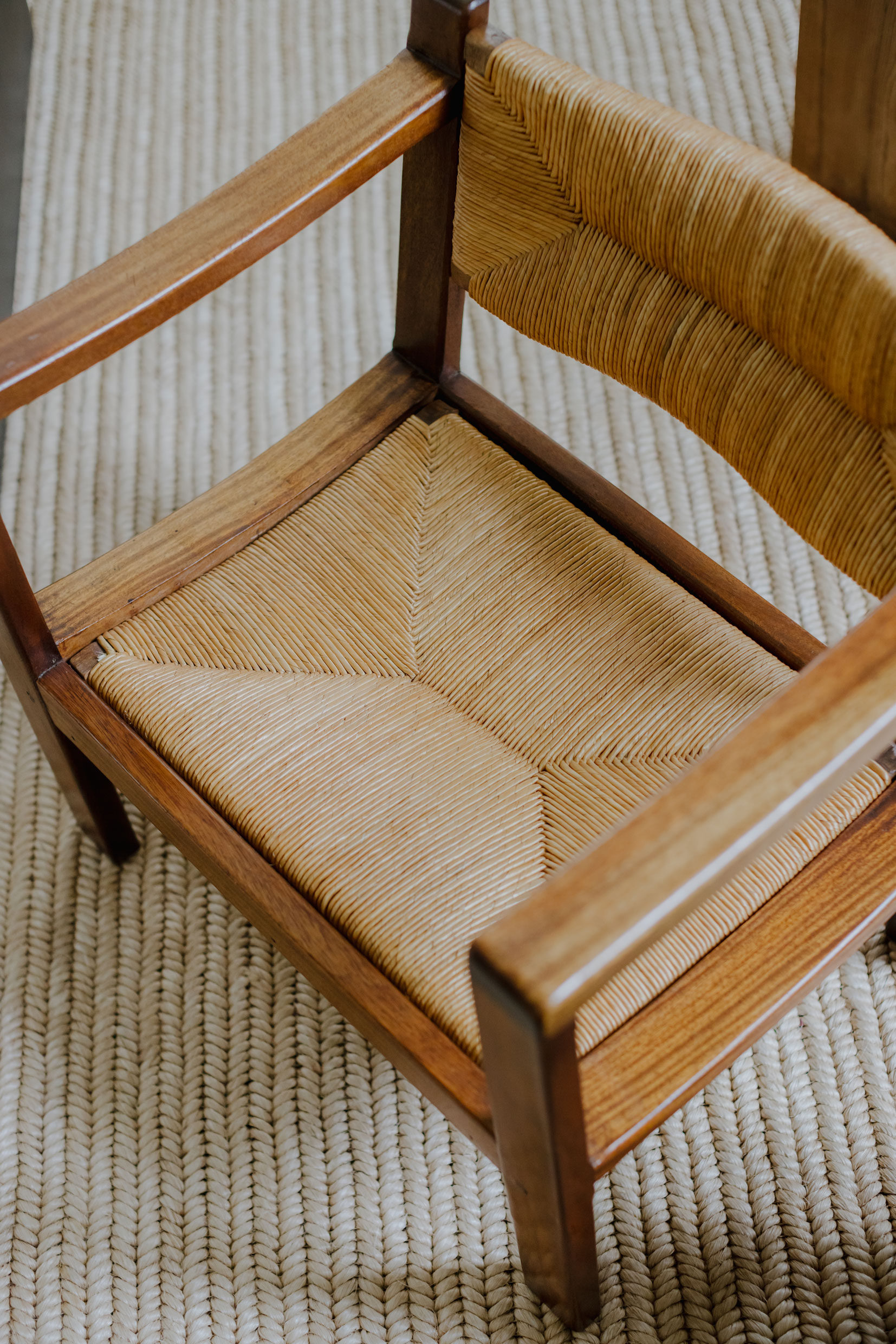 A pair of armchairs by Elizabeth Eyre de Lanux selected by Vincent Van Duysen | Photograph courtesy of Kevin Faingnaert
A pair of armchairs by Elizabeth Eyre de Lanux selected by Vincent Van Duysen | Photograph courtesy of Kevin Faingnaert
How and when did it come into your possession?
I got them at a Sotheby’s auction in July 2022.
Why is this object valuable to you? Does it hold particular memories or perform a useful daily function?
The object is valuable to me because I have been a fan of this particular piece for a long time, and also because they’re very unique and rare. I have memories of coming across her oeuvre and falling in love with her style. She was – like Pierre Jeanneret and José Zanine Caldas, the forefathers of International Style – a big inspiration to me. To now own them gives me joy. By being able to enjoy them in my living room together with my books, art pieces and accessories – they have become protagonists of my living quarters.
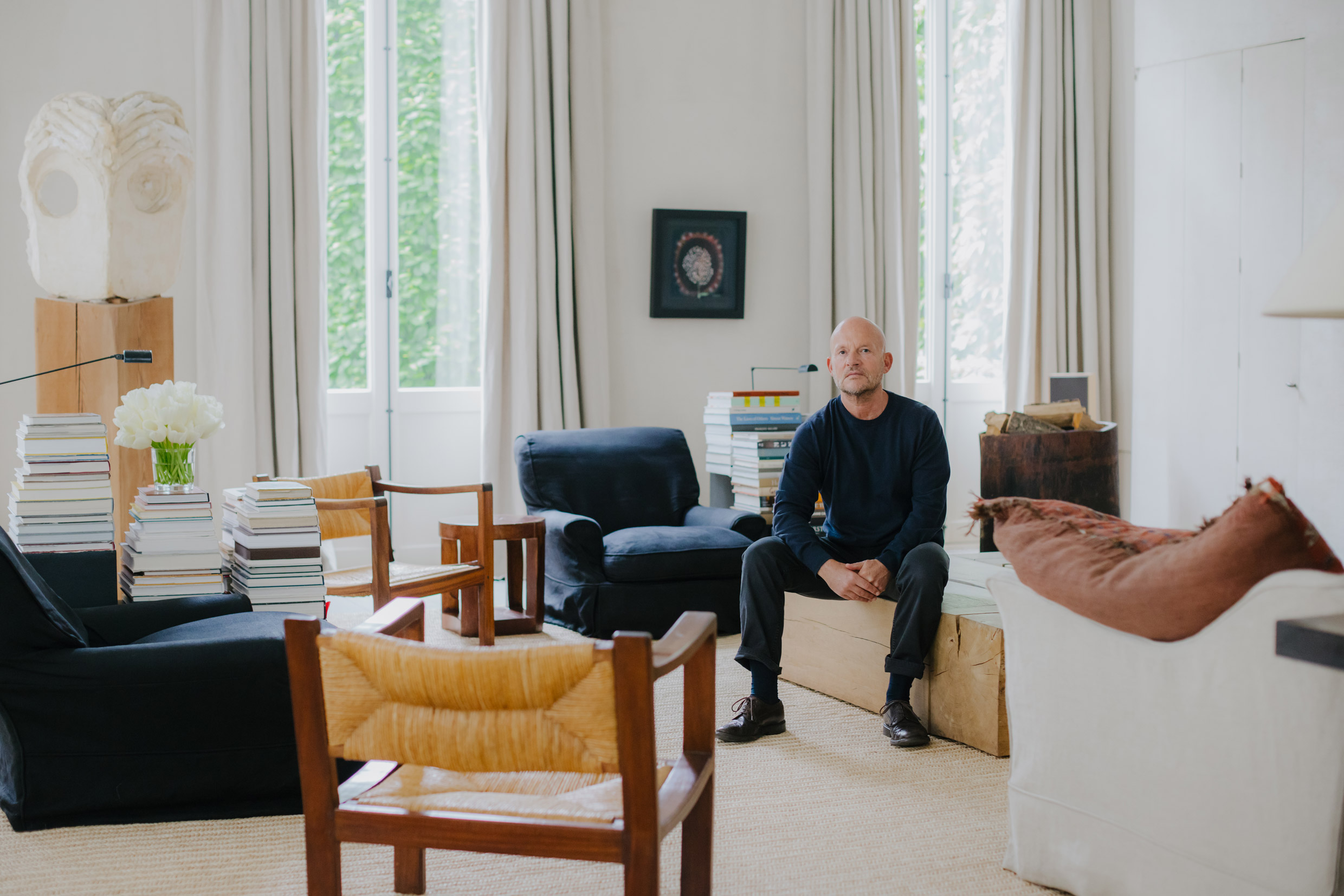
What do you like about its materiality or composition?
I like the mahogany gloss polish and the contrast between the pure design of the frame with the enveloping backrest and seat in woven straw. Their overall design belongs to my stylistic DNA, which is a deeply essential design language.
VASE #2 BY SHIRO KURAMATA, C. 1980S
SELECTED BY GEORGE YABU AND GLENN PUSHELBERG OF YABU PUSHELBERG
How would you describe your companion object?
The vase is a vessel of joy for both of us. It is an enigma of sorts, transforming based on its placement in an environment, and whether it contains flowers or stands on its own. It lives in our Toronto home, surrounded by other objects we have found around the world.
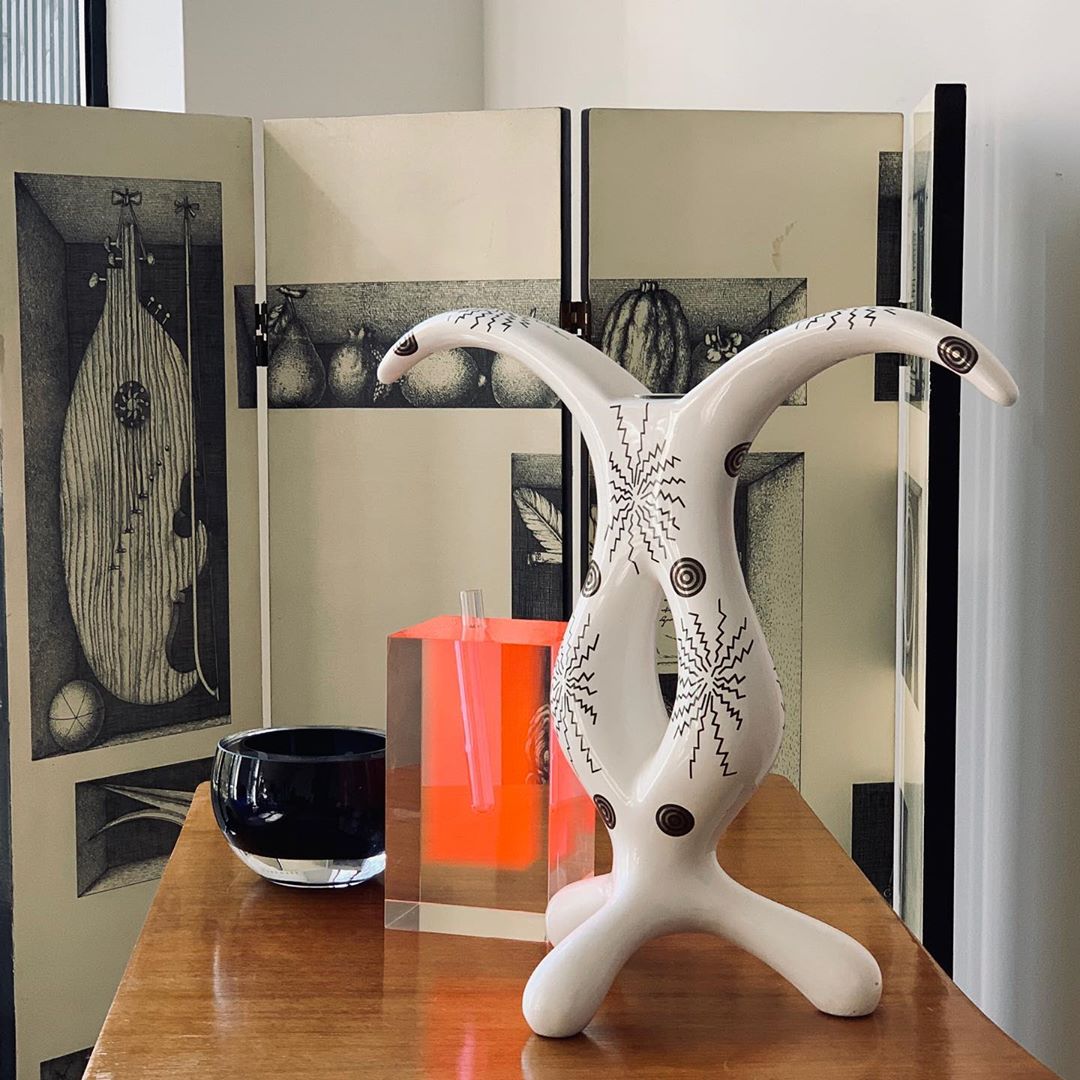 Vase | George Yabu and Glenn Pushelberg of Yabu Pushelberg
Vase | George Yabu and Glenn Pushelberg of Yabu Pushelberg
How and when did it come into your possession?
We found it nearly a decade ago at Caviar 20, a gallery in Toronto. A friend of ours spotted it and said: “This is meant for you”. They knew how much we both admire Shiro Kuramata, and how we would perceive this bud vase outside of its specific use and interpret it as sculpture.
Why is this object valuable to you? Does it hold particular memories or perform a useful daily function?
This bud vase is rare, unconventional and radiates beauty. We adore Shiro Kuramata’s work. On our last trip to Los Angeles, we found this brilliant book of his sketches and illustrations. We brought it to our studio so we could share its beauty and thinking with everybody there. People may associate his work with furniture, but it really is sculpture. There is a poetry that seeps through and makes functional purpose secondary.
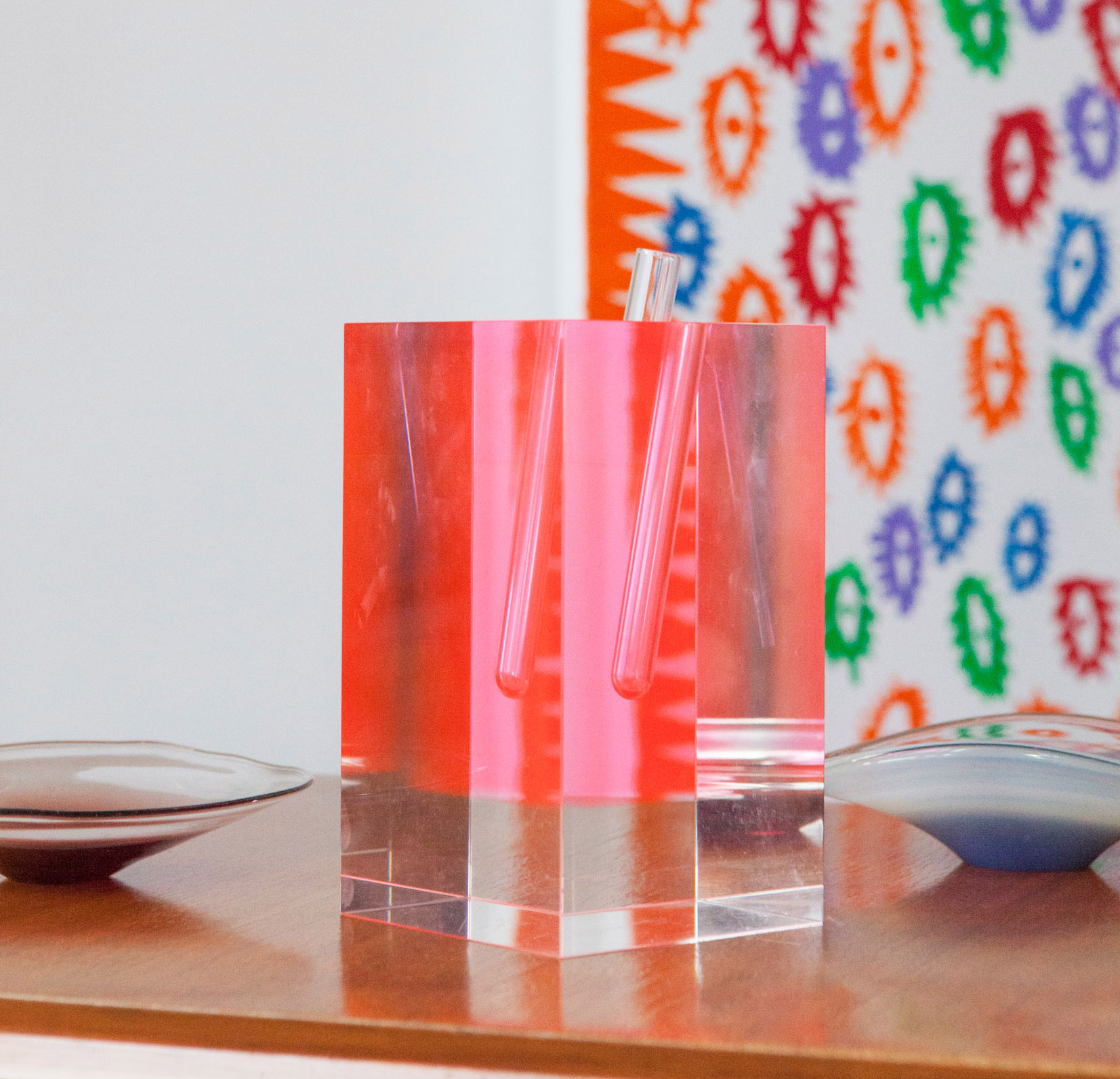 Vase | George Yabu and Glenn Pushelberg of Yabu Pushelberg
Vase | George Yabu and Glenn Pushelberg of Yabu Pushelberg
What do you like about its materiality or composition?
We like the technical prowess of moulding it twice. The suspended fuchsia resin in the middle, which makes it look like it is floating in a clear square. There is also the idea of placing a removable test tube into its core to place flowers, which adds another layer or dimension.
‘EUROPA AND THE SACRED BULL’, A CERAMIC SCULPTURE BY SIMONE FATTAL, 2021
SELECTED BY MICHAEL ANASTASSIADES
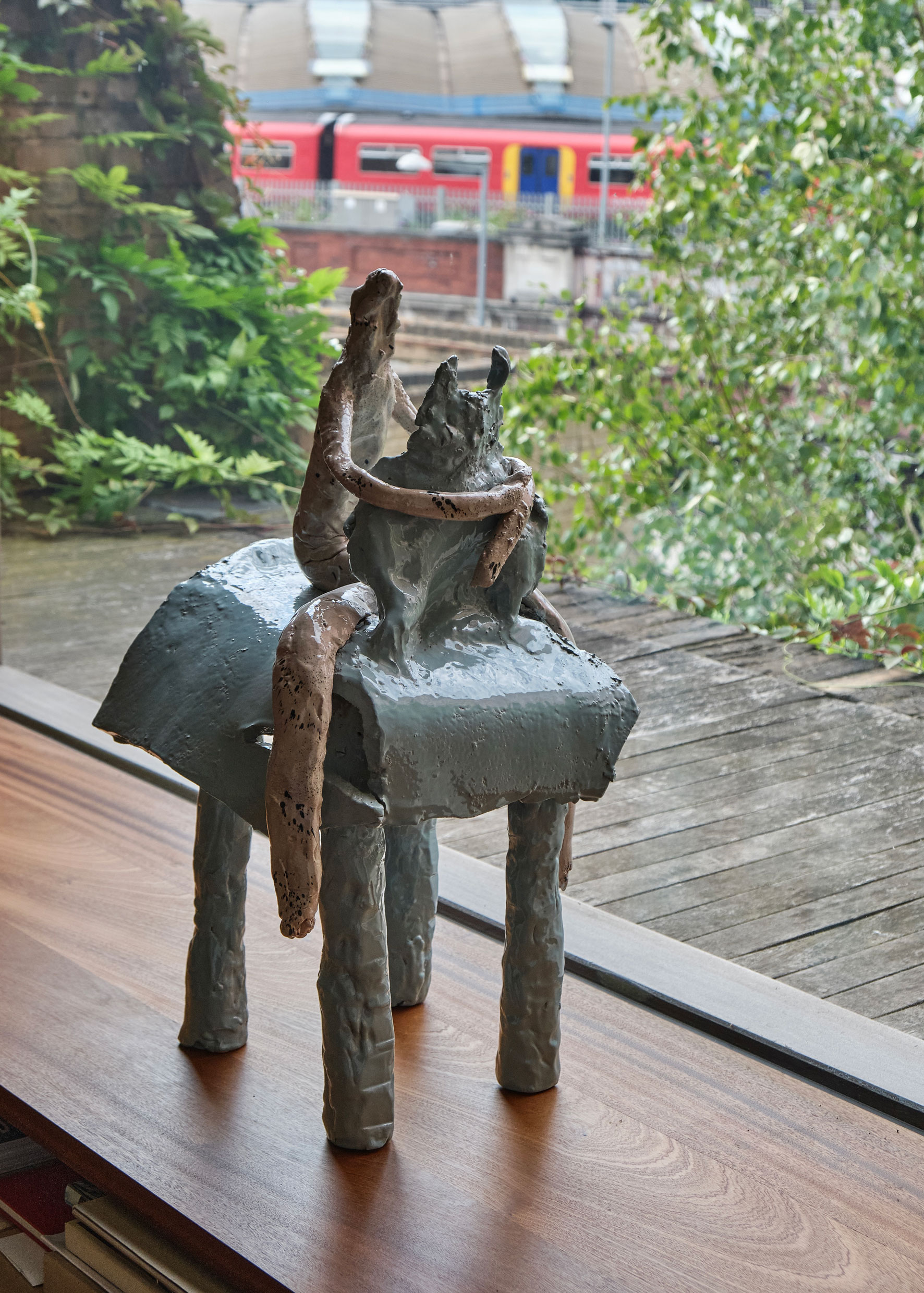 'Europa and the Sacred Bull’, a ceramic sculpture by Simone Fattal | Michael Anastassiades
'Europa and the Sacred Bull’, a ceramic sculpture by Simone Fattal | Michael Anastassiades
How would you describe your companion object?
The figures are rough outlines cut out of clay in an almost uniform thickness. Europa is then shaped in a three dimensional posture, wrapping herself around the back of a bull, who stands still. The bull's box-like body sits solidly on four columns and its neck protrudes vertically, around which its arms cross. The bull is painted in a light blue glaze, whereas Europa is a washed pink colour.
How and when did it come into your possession?
I acquired this piece after seeing it in an exhibition of the artist’s work at the Fondazione ICA Milano in September 2021. During this time, I was also exhibiting at the same institution. I was showing a new body of work which was a series of lights made out of bamboo titled Cheerfully Optimistic About the Future.
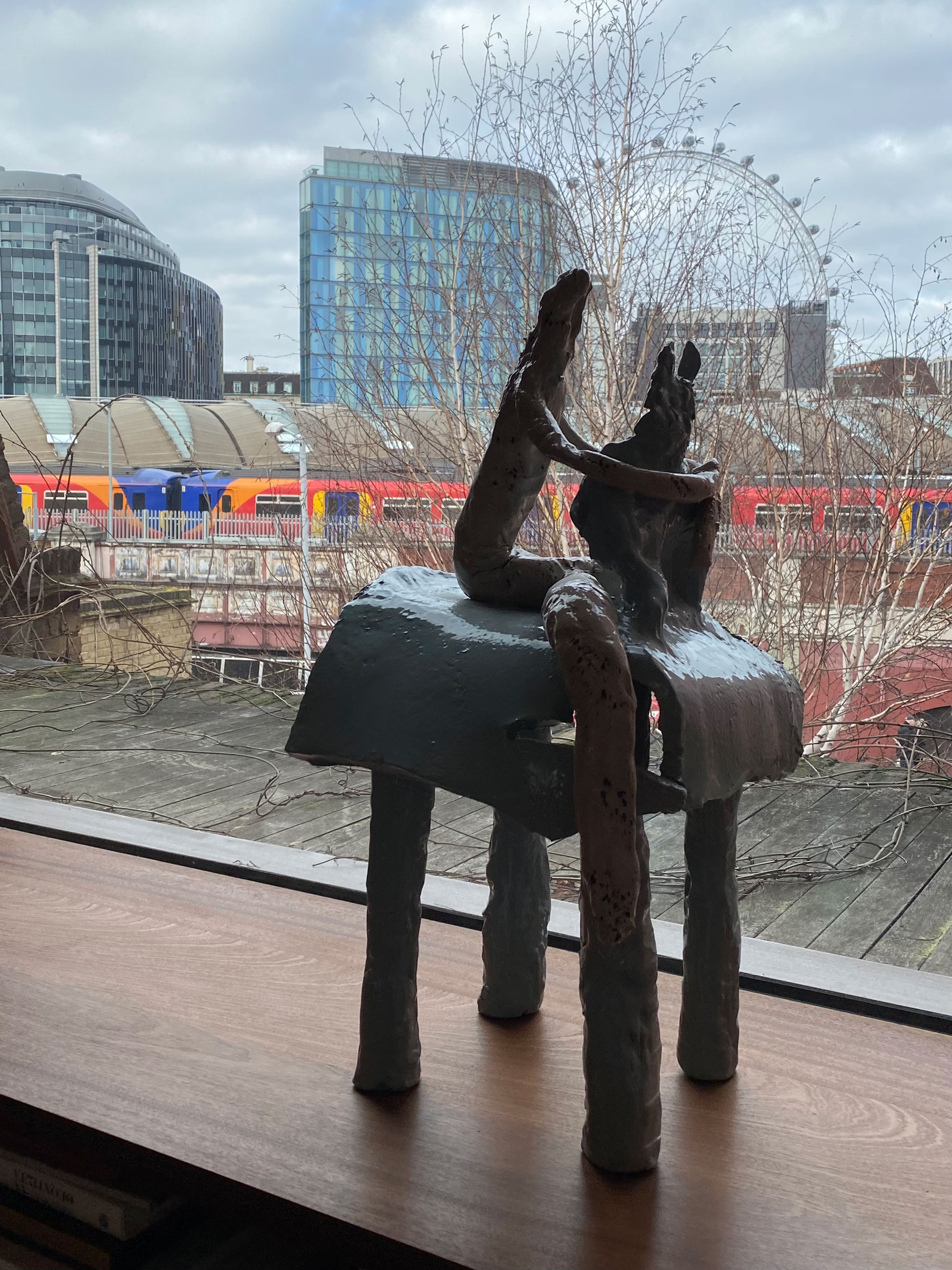 Europa and the Sacred Bull’, a ceramic sculpture by Simone Fattal | Michael Anastassiades
Europa and the Sacred Bull’, a ceramic sculpture by Simone Fattal | Michael Anastassiades
 Europa and the Sacred Bull’, a ceramic sculpture by Simone Fattal | Michael Anastassiades
Europa and the Sacred Bull’, a ceramic sculpture by Simone Fattal | Michael Anastassiades
Why is this object valuable to you? Does it hold particular memories or perform a useful daily function?
I have admired Simone Fattal’s work for many years. The first time I saw works of hers in person, was at her retrospective exhibition at the MOMA PS1 space in Brooklyn, New York, in May 2017. When her sculpture arrived at my home in London, I knew exactly where it would be displayed – on the window sill of my top floor library facing the train tracks of Waterloo station. Behind the tracks you can see the old Eurostar terminal from before it moved to Kings Cross, St Pancras and behind that the London Eye, which has become an important tourist landmark for the city.
What do you like about its materiality or composition?
The sculpture appears like a spontaneous expression of the artist’s relation with the material. There is no doubt that the continent of Europe must have been named after Europa. The scene of her abduction at my window fits perfectly with all that happened in London after Brexit.
A COLLECTION OF CANDLES STANDS FOUND IN THE PHILIPPINES
SELECTED BY LYNDON NERI AND ROSSANA HU OF NERI&HU
How would you describe your companion object?
They are a collection of old candle holders, possibly from Catholic churches around the Cebu area. This part of the Philippines was occupied by the Spanish for over 300 years, so they look very “Spanish” in style. They are different in shape and height, and they look great separately and together as a collective.
.jpg) Candle holders | Neri&Hu
Candle holders | Neri&Hu
.jpg) Candle holders | Neri&Hu
Candle holders | Neri&Hu
How and when did it come into your possession?
We were in Lyndon’s hometown in the Philippines one summer and saw them in an old home that had been turned into a furniture gallery. We asked where they found the candle holders and then shipped all of them back to our home in Shanghai.
Why is this object valuable to you? Does it hold particular memories or perform a useful daily function?
They hold Lyndon’s memory of his childhood hometown, and, given that they occupy different rooms for different purposes, we all share in that heritage. We use them on the table for dinners, place them in corners of the living room, and light them during special occasions. The collection is very much part of the space and “lives” in our house like we do.
What do you like about its materiality or composition?
The wood is very seasoned and has an amazing patina that allows the age of the object to shine through. The composition is representative of the quality of craft from this era of the Philippines – handmade, irregular, geometric, and organic at the same time.
The photographer Jeff Burton is known for the cinematic quality of his work: bathers by a hotel pool become a study in saturated colour; tanned bodies are seen at one remove, distorted by mirrored surfaces; a woman’s glance is glimpsed through a car’s rearview mirror.
Lunar New Year is the most important day in China’s lunisolar calendar.
The holidays are a time to eat, drink and make merry – the most convivial time of the year.
Thanks for your registration.